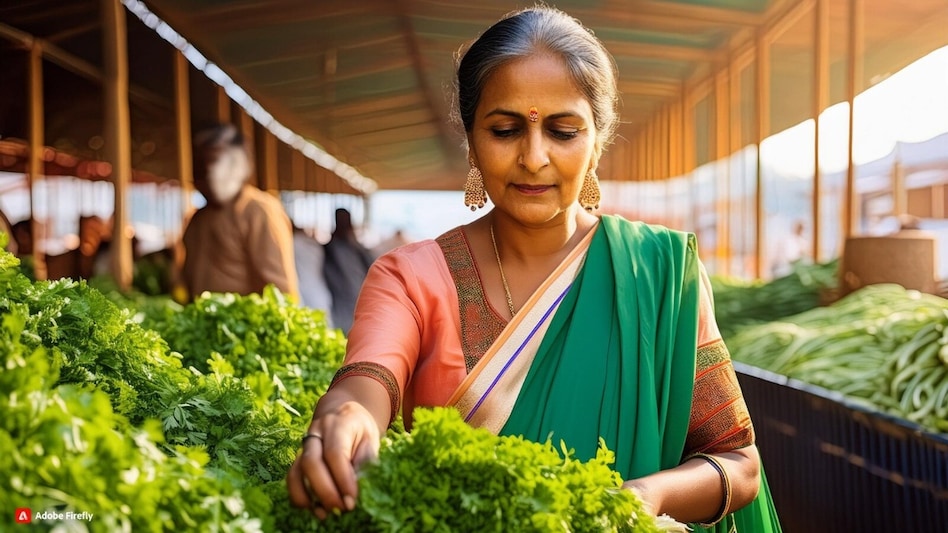 India is home to 13 million kirana stores, generating over $800 billion in annual revenue.
India is home to 13 million kirana stores, generating over $800 billion in annual revenue.  India is home to 13 million kirana stores, generating over $800 billion in annual revenue.
India is home to 13 million kirana stores, generating over $800 billion in annual revenue. uick commerce is reshaping the grocery game with its lightning-fast deliveries, leaving traditional neighbourhood kirana stores scrambling to keep up. A survey by Datum Intelligence reveals over 82% of buyers have shifted at least 25% of their kirana purchases to quick commerce, while 5% of respondents have completely stopped buying from kirana stores.
This shift has triggered a sense of urgency among kirana owners, who are witnessing a dip in overall sales volumes. A separate survey by Kiko Live, a SaaS platform for neighbourhood stores, found that kiranas are grappling with three major challenges: price competition from quick commerce platforms, faster delivery speeds offered by competitors, and delays in product availability.
Speaking to Business Today, Alok Chawla, Co-founder of Kiko Live, explained how consumer behavior around grocery shopping has undergone a significant transformation over the past two years.
“Earlier, grocery shopping meant walking to a store or visiting a mandi. Even though initiatives to digitise kiranas existed, they didn’t take off in a big way. However, with big players and investments entering the market, consumer behaviour has shifted, and kirana owners now feel the pressing need to digitise,” Chawla said.
India is home to 13 million kirana stores, generating over $800 billion in annual revenue. Yet, they don’t have a digital footprint, which makes it harder for them to compete with organised retail and quick commerce platforms.
“The retailer is looking for solutions that can provide a quick-commerce-like experience to their customers,” Chawla added.
Kiko Live aims to bridge the gap for kirana owners who want to adapt to the changing business landscape. At its core, the platform emphasises the importance of cataloguing products to enable online ordering.
The onboarding process begins with a physical visit to the store, where KYC details are collected, and the retailer is guided through completing their GSC registration. Currently, Kiko Live prioritises retailers who maintain digital inventories through Point-of-Sale (POS) systems.
“Retailers with digital inventory have a record of the products they sell stored in their POS systems. For instance, if a retailer sells 3,000 products, their POS will already have SKUs listed. This allows us to download their inventory file, match it with our database of over 30,000 SKUs, and instantly make their products live,” Chawla explained.
In contrast, smaller kirana stores without digital systems require manual verification and cataloguing of their inventory, which is a time-intensive process. Chawla noted that as a smaller company, Kiko Live is adopting a top-down approach, starting with digitally enabled retailers and eventually moving to smaller ones.
As per Tracxn, Kiko Live has till date raised around $4 million in multiple seed rounds with revenue of Rs 21.8 lakh and loss mounting to over Rs 2 crore.
Kiko Live leverages the Open Network for Digital Commerce (ONDC) platform for last-mile delivery, ensuring groceries reach customers within minutes. Since its launch last year, the platform has facilitated over five lakh orders and is currently operational in Delhi/NCR. Plans are underway to expand to Bengaluru within the next month.
Chawla believes that the platform’s focus on digitally equipped kiranas ensures scalability and efficiency, even as it sets its sights on smaller retailers in the future.
Despite challenges, the survey highlighted optimism among kirana store owners. A significant 84% of respondents reported already adopting technology and digital solutions to some extent. Many believe transitioning to online and quick-commerce platforms will help businesses grow within the next 1-2 years.
However, concerns remain over the survival of kiranas that fail to adapt to evolving market trends. As quick commerce continues to expand its footprint, the urgency for kiranas to digitise has never been greater.
Copyright©2025 Living Media India Limited. For reprint rights: Syndications Today